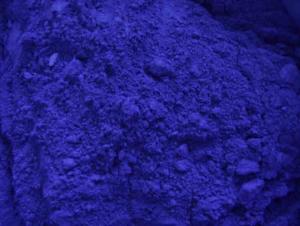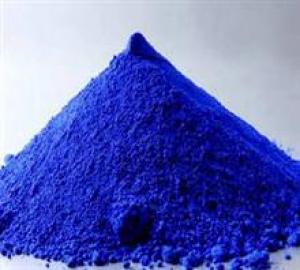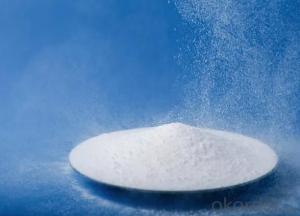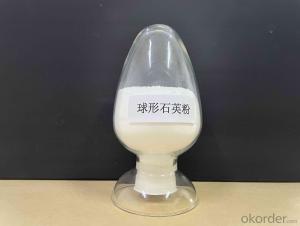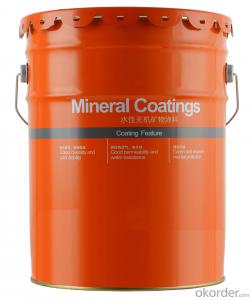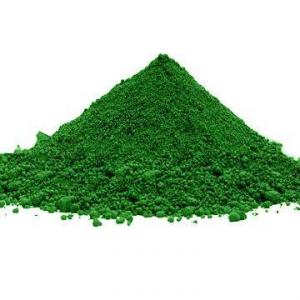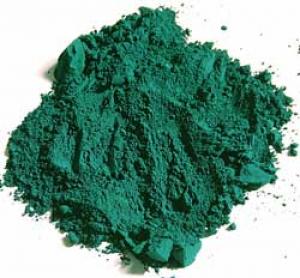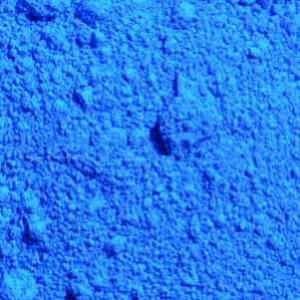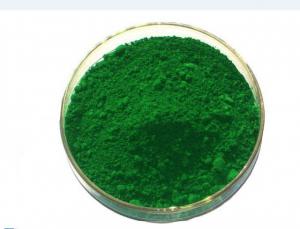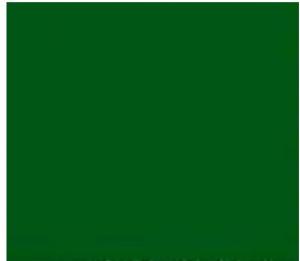Ultramarine Blue For Paint,Ink,Plastic and Textile printing Rubber,Paper making,dyer,Stationery and Constractio
- Loading Port:
- Shanghai Port
- Payment Terms:
- TT or LC
- Min Order Qty:
- 1 Metric Ton m.t.
- Supply Capability:
- 8000MT Per Year m.t./month
OKorder Service Pledge
OKorder Financial Service
You Might Also Like
Product Details Of Ultramarine Blue :
Appearance:solid
Usage Of Ultramarine Blue :
Used in tinting applications of blue paint, rubber, plastic printing, ink, paper, papermaking, soap,and beautification on ancient architecture.
TDS OF Ultramarine Blue :
Ultramarine Blue | |
| Specifications |
No. | 462 |
Appearance | Powder Form |
Colour | Dark Blue |
Tinting Strength | 100 +/- 5% |
Water Soluble Matter | 1% |
(105 +/- 2) | 1% |
(325 ) | 0.5% |
PH. Value | 6.5 - 7.5 |
Oil Absorption | 25 - 45 % |
Free Sulphur | 0.3% |
Packing Of Ultramarine Blue :
25kg/ bag , 20 MT / 20 FCL or as your requirements .
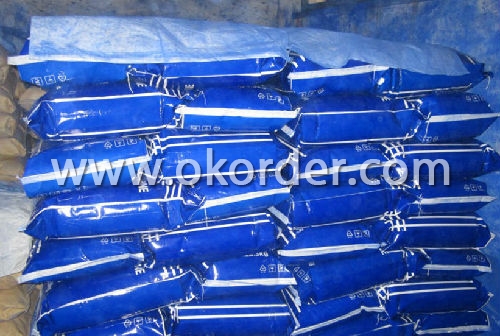
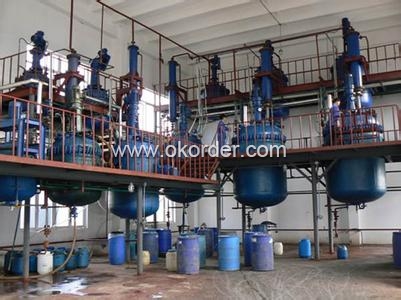
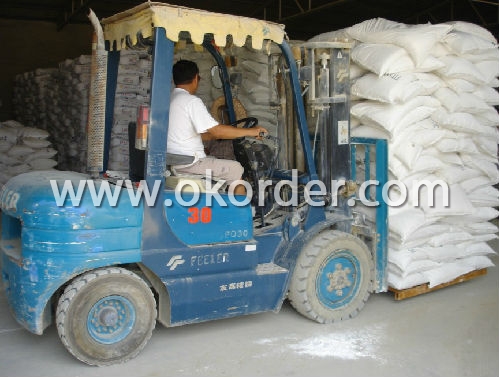
- Q:how are the pigments in clothes differ from plant pigments?
- Pigments are pigments. They are made of molecules that absorb some colors and reflect others from the visible spectrum of light, which gives everything color. Black pigments absorb everything and reflect nothing, so black is the absence of color and it is why dark clothing are warmer in winter. White pigments reflect everything and absorb nothing, so clothing that is white is cooler in summer. Most plants have more chlorophyll, a green pigment, in them than other pigments, so the plant is overwhelmingly reflecting green back to our eyes and absorbing the red and blue ends of the spectrum. In fall, when the chlorophyll breaks down, we can see the yellow, orange, and red pigments that are also in the leaf for a few weeks. In this way, all pigments are alike. However, perhaps what your teacher is looking for is that the green pigment chlorophyll in plants not only absorbs red and blue wavelengths of light, it also uses that energy to excite electrons from the molecules of chlorophyll and send them through an electron transport chain that enables light energy to be converted to chemical energy and store it in the C-H bonds of glucose, which is made during photosynthesis. Other pigments, whether they be in clothes or other objects such as cars or just about anything else do not do this. Only plant chlorophyll, or the green pigment in plants, converts light energy to chemical energy. That is the one huge difference. Otherwise, like all other pigments, chlorophyll absorbs some wavelengths of light and reflects others, in the case of chlorophyll, green wavelengths of light.
- Q:what are the differences between colorfast and non colorfast pigments?
- I'm sure with enough research you will be able to find these answers and explanations in your text book. Or google them, maybe it will have pics to help describe if your more of a hands on learner. Good Luck.
- Q:I was intrested in buying some pigments on ebay but they dont say the name they just say these nubers #68 #69 #93 do u no what pigment name they are u could serch it that might help thank you
- MAC pigments actually have the name listed on the bottom. If the pigments on OKorder do not, you are more than likely looking at fakes.
- Q:In photosynthesis whats the difference between primary and accesory pigments?
- Primary pigments are molecules that convert light energy to chemical energy directly; chlorophyll is the primary pigment in all photosynthetic organisms. Accessory pigments are molecules that absorb photons which are not captured by chlorophyll. The presence of accessory pigments (found in the thylakoid membranes of plants) allows phototrophs (plants, algae, and cyanobacteria) to capture energy from the sun that would otherwise go to waste. The two most common types of accessory pigments are carotenoids and phycobilins. Some examples of carotenoids in common plants are: beta-carotein (carrot orange), lutein (marigold yellow), and lycopene (tomato red). Phycobilins are found only in red algae or cyanobacteria. The two most common phycobilins are: phycoerythrin (red), and phycocyanin (blue). The presence of accessory pigments in plants is masked by the presence of chlorophyll during the Spring and Summer seasons; that's why leaves are green most of the time. The color change from green to red, orange, or yellow that we observed during the Fall season is caused by the absence of chlorophyll; the accessory pigments are always present until the leaves fall as the trees go into dormant mode.
- Q:how to prepare coloured pigments?
- Chemically, pigments fall into a number of large groups, but these are often arbitrarily divided into two major groups. The first group comprises pigments that contain nitrogen; it includes hemoglobins, chlorophylls, bile pigments, and dark-colored pigments called melanin, widespread in many animal groups and the chemical that is responsible for variations in the color of human skin. Related to melanins are the indigoids, of which the well known plant pigment indigo is an example. Riboflavin, which is also known as vitamin B12, is one of a number of pale yellow to green pigments that are produced by several plant groups. The second group is formed of pigments without nitrogen. Carotenoids are members of this group, as are the important plant pigments called flavonoids. In leaves, flavonoids selectively admit light wavelengths that are important to photosynthesis, while blocking out ultraviolet light, which is destructive to cell nuclei and proteins. Flavonoids are also important in flower color, in particular providing red and blue pigments. Bright fall colors are produced by the conversion of colorless flavonoids, called flavonols, into colored forms, called anthocyanins. Quinones provide many yellow, red, and orange pigments, including several useful dyes derived from insects that feed on plants containing the quinones. Cochineal, for example, is a red pigment obtained from the fat cells of scale insects that feed on cactus plants.
- Q:If they are not the same, then what is the difference? Please help me out here.
- Yes, tannins are pigments but they aren't really the main plant pigment. Plant pigments usually refer to photosynthetic pigments (chlorophyll, carotenoids, etc.). These photosynthetic pigments give the leaves their green color (or yellow/orange in the fall). Tannins are non-photosynthetic phytochemical (involved in plant metabolism and internal functioning), but they are also a pigment. Tannins (and lignins) are brown. This is was gives dead leaves and wood their color. Tannins also leach out of the leaves when soaked in water (same process as brewing a cup of tea). So tannins are pigments when they leach out of leaves and stain water (or other things) brown, but they are not photosynthetic plant pigments. In other words, it depends on what context you are calling a tannin a pigment. In a live plant they are not a pigment (judgment call here). In a dead leaf or when they leach out of a leaf they are a pigment.
- Q:I am 33 years old and have pigment dispersion syndrome. My new doctor prescribed laser treatment, to prevent eye damage and potential sight loss. A previous doctor said to try drops, but only if my eye pressure became high-risk. Has anyone in Yahoo's network been in my situation and if so, what did you do?
- Laser treatment for pigment dispersion is a fairly... I don't know what the word is. Modern? Progressive? It's something that isn't necessarily new, but it's definitely becoming more popular as an option, because it works fairly well without much risks. (Unlike medical treatment, where the drugs have much more common side effects.) Many people -- myself included -- have pigment dispersion syndrome, but not pigmentary glaucoma. The trick for us doctor types is to figure out which people are going to start having glaucoma and which ones won't. There's more to it than just pressure -- the amount of pigment, as well as the appearance/health of the optic nerve, any visual field damage, etc. There's also been some research suggesting that people with a particular shape of iris do better with laser treatment. If you're worried about it, make sure you're doing a visual field test regularly (I do mine yearly) and have your pressures monitored on a routine basis, and if anything shows up unusual, at least get a second opinion or consultation about the options.
- Q:pigment: its color (to our eyes) what color of light it absorbsChl a Chl bCartenoidsany right answers would bbe greatly appreicated thanks soo muchhh
- pigment: .... reflected color to eyes .. what color of light it absorbs Chl a reflects green spectra between the blue and red absorption peaks. Some is absorbed at blue 450nm but most absorbed at red 680 - 700nm. Chl b reflects green spectra between the blue and red absorption peaks with a difference in which peak is stronger. Most is absorbed at blue 470 but also some at blue 430 and red 640 nm. Cartenoids reflect yellow, orange, or red and absorbs blue to blue-green light spectra. Xanthophyll absorbs well at 400-530 nm. Xanthophylls are a common sub class of the carotenoid pigment group. Beta-carotene absorbs most strongly between 400-500 nm.
- Q:why light and pigments are different?
- A pigment is a material that changes the color of reflected or transmitted light as the result of wavelength-selective absorption. This physical process differs from fluorescence, phosphorescence, and other forms of luminescence, in which a material emits light. Many materials selectively absorb certain wavelengths of light. Materials that humans have chosen and developed for use as pigments usually have special properties that make them ideal for coloring other materials. A pigment must have a high tinting strength relative to the materials it colors. It must be stable in solid form at ambient temperatures. For industrial applications, as well as in the arts, permanence and stability are desirable properties. Pigments that are not permanent are called fugitive. Fugitive pigments fade over time, or with exposure to light, while some eventually blacken. Pigments are used for coloring paint, ink, plastic, fabric, cosmetics, food and other materials. Most pigments used in manufacturing and the visual arts are dry colourants, usually ground into a fine powder. This powder is added to a vehicle (or binder), a relatively neutral or colorless material that suspends the pigment and gives the paint its adhesion.
1. Manufacturer Overview |
|
|---|---|
| Location | Hunan, China |
| Year Established | 1998 |
| Annual Output Value | Above US$ 30 Million |
| Main Markets | 20.00% North America 15.00% South America 15.00% Eastern Europe 10.00% Southeast Asia 10.00% Northern Europe 10.00% South Asia 10.00% Western Europe 5.00% Africa 5.00% Mid East |
| Company Certifications | ISO9001:2000; |
2. Manufacturer Certificates |
|
|---|---|
| a) Certification Name | |
| Range | |
| Reference | |
| Validity Period | |
3. Manufacturer Capability |
|
|---|---|
| a)Trade Capacity | |
| Nearest Port | Shanghai Port |
| Export Percentage | 41% - 50% |
| No.of Employees in Trade Department | 6-10 People |
| Language Spoken: | English; Chinese; |
| b)Factory Information | |
| Factory Size: | Above 10,000 square meters |
| No. of Production Lines | Above 10 |
| Contract Manufacturing | Design Service Offered; Buyer Label Offered |
| Product Price Range | High; Average |
Send your message to us
Ultramarine Blue For Paint,Ink,Plastic and Textile printing Rubber,Paper making,dyer,Stationery and Constractio
- Loading Port:
- Shanghai Port
- Payment Terms:
- TT or LC
- Min Order Qty:
- 1 Metric Ton m.t.
- Supply Capability:
- 8000MT Per Year m.t./month
OKorder Service Pledge
OKorder Financial Service
Similar products
New products
Hot products
Related keywords
